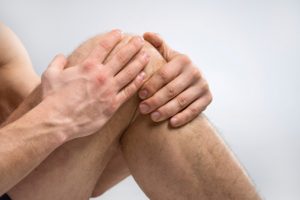
Although the sounds may be muffled, you can actually feel the cracking sensations by placing your hand over the affected joint.
How the knee-popping noise is formed
That popping sound you hear when you move your joints is caused by a build-up of gas. Gas surrounds the joint and forms tiny bubbles. When the joint bends the bubbles pop, creating the sound you hear. A good example of this is when we crack our knuckles. Many of us are told not to, as it can lead to arthritis, but it is nothing more than popping gas bubbles.
Arthritis is much different than crepitus because the cartilage becomes damaged, so the sounds you hear are actually the bones hitting each other.
Causes of crepitus
Crepitus is caused by air getting inside soft tissues. Crepitus can also be caused by the rubbing of hard tissues, including bone fragments, cartilage tears and damages, erosion of cartilage and rough cartilage due to arthritis.
Other causes of crepitus include:
- Certain types of bacterial infection
- Penetrating wound to the chest, back of abdomen
- Perforation of the gut
- Collapsed lung
Symptoms that can occur with crepitus
- Grinding
- Creaking or cracking
- Crunching
- Grating
- Popping
Sometimes pain can be associated with crepitus, but it is not a result of arthritis. It is deemed quite normal for people’s joints to pop occasionally.
Crepitus and arthritis knee pain
Generally there is not much to worry about when it comes to crepitus, but sometimes it can be an indicator of osteoarthritis and other types of arthritis. 27 million Americans have osteoarthritis and many of them are seniors. Osteoarthritis affects the joints, especially the ones in the hips and knees.
The breaking down of cartilage is what can cause pain in osteoarthritis. Cartilage works as a cushion between bones, so when it breaks down the bones begin to rub together, which leads to inflammation and pain. When pain is experienced with crepitus it is usually a strong indication of osteoarthritis.
Preventing crepitus knee pain associated with arthritis
- Lose weight
- Exercise
- Acupuncture
- Topical remedies for pain
- Electrical stimulation
- Chiropractic
- Massage
- Physical therapy
- Assistive devices like canes
- Use hot and cold compresses